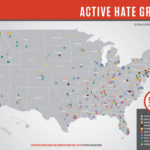Young, gay American Indians are rediscovering tribal heritages that often revered “Two-Spirits,” people who manifested both masculine and feminine traitsBy Shadi Rahimi, Pacific News Service
SAN FRANCISCO- Mar 17, 2005-Gabriel Duncan, 18, sits before a table covered with rich desserts and salmon salad sandwiches, glancing calmly at the mostly-older faces staring back at him. A California Paiute in a Minor Threat sweatshirt and brown beaded necklace, Duncan is reading his poetry aloud for the first time. “I’d like to discuss just why we’re so disgusting,” he recites. “Why we can’t marry, and just why the word ‘equality’ is rusty.” Like most of those gathered this evening at the San Francisco LGBT Community Center, Duncan is a member of Bay Area American Indian Two Spirits (BAAITS), a six-year-old nonprofit that offers support and activities to gay, lesbian, bisexual and transgender Native Americans. Similar groups exist in Oklahoma, Colorado and Minnesota. The term “Two-Spirit” refers to a belief among some tribes that there are people who manifest both masculine and feminine spiritual qualities. According to Native American scholars, many tribes once revered Two-Spirits, viewing them as a third gender with a special spiritual connectedness. In these tribes, Two-Spirits filled important tribal roles as counselors, storytellers and healers. This belief, scholars have also observed, has been eroded in many places by the imposition of Judeo-Christian views of homosexuality as sinful. “Homophobia was taught to us as a component of Western education and religion,” Navajo anthropologist Wesley Thomas has written. “We were presented with an entirely new set of taboos, which did not correspond to our own models and which focused on sexual behavior rather than the intricate roles Two-Spirit people played. As a result of this misrepresentation, our nations no longer accepted us as they once had.” This creates challenges for Two-Spirit Native Americans as they try to reconcile their tribal and sexual identities. BAAITS member Cody Runningbear was raised on a reservation in Broken Arrow, Okla., and has two younger siblings who are also Two-Spirit. He came out when he was 15, but says his family did not — and does not today — acknowledge his sexual identity. “If they had, I would have been more comfortable with myself,” Runningbear says. According to researcher Will Roscoe, former coordinator of the Gay American Indians History Project, there is no single belief about Two-Spirits among the more than 800 tribes in the United States and Alaska, about 200 of which are not federally recognized. Two-spirits may be respected within one tribe and ostracized in another, while the topic of sexuality could be ignored altogether in yet another tribe. But whatever tribe they hail from, Two-Spirits share a common experience, says Chris Gomora, 39, an Anishinabe who says he became secure in his identity while in a seven-year relationship with a Cuban native. Gays and lesbians “walk with a foot in two different worlds, and that is something that we as Natives are familiar with,” Gomora says. “For those of us who walk traditionally in the Western world, our two selves are already in opposition.” Duncan, who was adopted at birth by a white couple in Alameda, Calif., says he was fortunate to find support and encouragement when he came out to his parents at age 12. When he faced prejudice and taunts at school, he joined a gay and lesbian youth group at a local community center. Duncan, who met his first boyfriend in a mostly white youth group, found comfort among gay peers, but felt something was missing, he says. When he heard representatives of BAAITS speak at the community center, he realized that he needed something that specifically addressed his identity as a gay Native American. “I was really wandering when it came to spirituality,” says Duncan, whose previous exposure to Native culture had consisted of attending a few powwows with a white lesbian friend of his mother. “In the BAAITS group, we do healing practices and drum circles. It’s given me a different outlook, and wisdom from my elders.” Like Duncan, 30-year-old Beck Stroud, who is white and Cherokee, grew up with little knowledge of her Native heritage. She says she discovered a sense of spirituality within the tribally inclusive BAAITS group that led to a personal transformation. “It has changed me so much,” Stroud says. “I never used to pray. I thought, ‘No god is going to hear me.’ Now, when I drum or pray, I feel that there is someone out there. I have calm in my life.” Duncan says he does not want other young Native Americans to grow up with a sense of rejection or isolation from their sexuality or their heritage. He is working to form a Two-Spirit youth group that would provide tribal mentors, spiritual guidance, public speaking opportunities and group activities. He doesn’t have any members yet, aside from himself, but he has picked a name: BAAITS Youth Circle. “Yes, there’s internalized homophobia in every gay community, but as a Native American,” Duncan says. “We are taught not to like ourselves because we’re not white. In our communities, people don’t like us because were gay. I want to address the history of colonization, educate others and to share Native culture — I want us to help keep it alive.”
PNS contributor Shadi Rahimi is an editor for YO! Youth Outlook , a magazine by and about Bay Area youths and a PNS project. |
||
|










